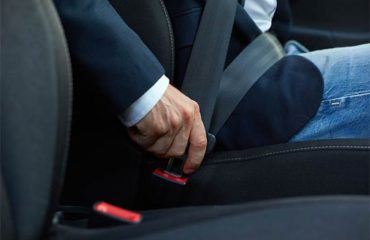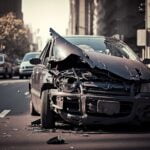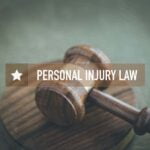Injured in a slip and fall accident in Kansas? Here is what you need to know!

A Slip and fall accident can happen at any time, to anyone and at any place. Although the common misconception is that they are an aging related problem, taking a tumble can be dangerous regardless of your age!
The big problem with slips, trips and falls is that victims do not know when compensation can be sought. Add to this the frequency with which these incidents occur, and it becomes quintessential to learn more about them.
Continue reading to learn more about the risk factors and the possibility of seeking damages for slip and fall accident injuries in Kansas.
Just how common are slip and fall accidents?
Those above the age of 60 have the greatest risk of suffering catastrophic injuries from falls. However, the CDC noted that unintentional falls are the top cause of non-fatal injuries among all age groups.
In 2014, Kansas Department of Health termed such accidents as the most common external cause of death in the state. Across the country, slipping and falling sends nearly 800,000 people to the hospital. In Kansas, slip and fall accidents are responsible for well over 8,000 ER visits and more than 1,200 deaths annually.
What’s causing all those people to slip and fall?
Hotels, restaurants, bars, retail establishments, parking lots, parks, apartment complexes, stairways, sidewalks, and others, you can slip and fall at/in any of these locations. The culprit is not always a shiny, slick floor; there are many other risk factors such as:
- Damaged and cracked sidewalks.
- Loose pavers/tiles or broken concrete surface of driveways and walkways.
- Snow and other obstacles that can turn into a tripping hazard.
- Stairs that are abnormally shallow or steep or uneven.
- Narrow stairway treads and broken/loose handrails.
- Changes in the surface/height of the ground or the floor.
- Sudden and indiscernible step downs that are not marked with a warning sign.
- Worn out or torn carpeting.
- Liquid spills that are not cleaned.
- Insufficient lighting.
- Uneven flooring.
- Construction debris.
- Electrical cords that are not secured as they should be.
- Lack of warning signs to make visitors aware of risky areas.
While not all risk factors can be immediately addressed, the property owner/manager has the responsibility of putting up signage that tells people to steer clear of the trouble spots.
Are slip and fall accidents really as dangerous as they say they are?
Many slip and fall accidents only cause minor injuries but there are those that have left people with broken bones and more. Some of the common injuries in such accidents include:
Broken bones: Although fractures of large skeletal structures like the hip bone are most common among seniors, a fall can cause anybody to break a bone. Regardless of age, it is common for people to suffer from leg, arm, rib and hand fractures in such accidents.
Dislocated joints: If the fall exerts abnormal pressure or twisting action on the joints, it can lead to dislocation. Wrist dislocation and fracture frequently occur when a person tries to break the fall by using their hands and slipping often leads to ankle dislocation.
Damaged cartilage: Although the elbows usually get away with some serious skinning and bruising in case of a fall, the knees end up being crushed between the body and the hard floor. So, torn and damaged cartilage and kneecap fracture are also common fall-related injuries.
Torn ligaments: The shoulders bear the brunt of the entire force exerted by the body when you try to grab onto something to stop yourself from falling or when the side of the body hits the ground first. Depending on just how bad the fall was, you could end up with soft tissue damage and muscle tears.
Herniated disc: Falls exert undue and abnormal pressure on all parts of the body and the neck is particularly ill equipped to handle the stress. So, it is not uncommon for victims to suffer from soft tissue damage that impacts the movement of the vertebrae in the neck.
Spinal cord damage: Over 30% of all spinal injuries are caused by slip and fall accidents. A large percentage of these can cause chronic pain and debilitation but some also lead to paralysis and death.
Internal organ rupture: If the accident occurs when ascending the stairs, the nose of the stair tread may hit the abdomen, impacting the internal organs.
Traumatic brain injury (TBI): It is hard to believe that a simple fall can cause so much trouble. The truth is that slip and fall accidents are the leading cause of TBI’s such as concussions. Depending on just how bad the bump was, a person can suffer from cognitive deficits, short and long term memory loss, seizures, mood changes and more.
Is it possible to seek compensation for slip and fall accidents in Kansas?
Unlike car crashes where your minor injuries are covered by your PIP policy, in case of slip and fall accidents you have no such safety net. You will have to rely on Medicare or your health insurance to cover the treatment cost of minor injuries. However, if the bills exceed your coverage limits, you can sue a responsible party for your loss.
Whether the slip and fall accident occurs in a public area or on private property, as long as you can prove that you were legally allowed to be at that location at the time of the accident and that the accident was caused due to the negligence of the property owner/manager, you can claim damages. These torts fall within the Premise Liability Laws of Kansas, which means that comparative negligence will apply.
Is there a time limit for filing slip and fall accident cases?
Like all other personal injury cases, you get a maximum of two years from the date of the accident/injury to bring the case. However, this statute of limitation (deadline) is only applicable to private parties and not government agencies.
In Kansas, you get 60 days to file a claim with a state department that you believe is accountable for the accident and your injuries. The most important thing to understand here is that you must act immediately if you do not want to raise doubts about your claim.
If you wait too long, the other side will argue that had your injuries been serious, you would have sought help sooner. If you have sustained injuries in a slip and fall, the right time to get in touch with DeVaughn James is right now.
Can the property owner/manager always be held accountable for slip and falls?
The property owner/manager/representatives are responsible for maintaining the property in a reasonably safe condition for visitors and customers. However, the basic tenets of law that apply to personal injury cases are also applicable for slip and fall accidents.
This means that accountability hinges entirely on proving negligence. In such matters, negligence is defined as failure to use the care/to act in a way that a reasonable person would under similar circumstances.
In this broad definition lies the problem that makes personal injury ligation as complicated as it is. If the defendant can prove that they were unaware of the fall hazard, you will have no basis for the tort claim. Taking the definition forward, negligence can be claimed in 4 scenarios:
- The fall hazard was deliberately caused by the property owner/defendant or inadvertently resulted from some act they performed.
- Whether the hazard was caused by the owner/his representative or not, the owner knew about the hazard and did nothing to correct it.
- Despite knowledge about the hazard, the owner did nothing to warn others of it or did not offer adequate warning of it.
- The owner should have known/must have known about the hazard as any reasonable person in a similar situation would have known about the hazardous condition and acted to correct it/warn about it.
Proving negligence is a complex task, as it is entirely based on facts as well as circumstances. That is one of the primary reasons why you will need an experienced attorney to understand if the property owner was negligent and can be legally held responsible for your injuries.
What about the role of comparative negligence in slip and fall claims?
Comparative negligence will consider if you were in any way responsible for the accident, even if this responsibility only played a small role in the fall. Unlike contributory negligence, comparative fault does not bar you from seeking compensation, unless the defendant can prove that the fall was completely due to your own actions. However, comparative negligence laws can lower the compensation you receive.
This is how the comparative fault calculation works. Suppose you have filed a claim for $50,000 in damages but, the court finds that you were 20% at fault for the fall. In this case, your award will not exceed $40,000 (i.e. 80% of the damages sought).
The calculation is straight forward but, how exactly do they come to the figure of 20% fault? This is the human factor of the calculation process and there are no set rules to determine what act on the defendant’s part contributes precisely how much to the percentage of comparative negligence.
And for all those of you who are wondering how the victim can contribute to a slip and fall accident, here are a few factors that will be brought up in court/at the negotiation table.
- Your inattentiveness may have kept you from noticing a hazard that was clearly visible: For example, you were so busy gazing at your phone that you did not notice the obstacle in your path and tripped over it.
- You were in a place that you had no business being in: For instance, an aisle was closed for shopping due to product spills, but you went past the barricade and ventured into it anyway.
- You deliberately did not heed the hazard warnings: For example, despite signs posted to warn you about bad pavement condition, you chose to use the side walk.
- The hazards were obvious yet you chose to ignore them: For instance, you ventured out in winter without the proper footwear while being aware of the ice and snow accumulation on the sidewalks.
- You were aware of the fall hazards beforehand but did not notify the relevant authorities or did not give them enough time correct the problem: For example, you knew about the broken hand rail in your apartment complex but did not notify the management or notified them and then used the handrail immediately afterwards, not giving them enough time for repair.
If you notice, all of these points can be shot down by an experienced attorney who knows how to use the right evidence at the right time.
Comparative negligence laws will impact your settlement offer or verdict but to what extent depends on the expertise of your lawyer and the circumstances of your accident.
This is where DeVaughn James can help!
Our attorneys have decades of experience in handling personal injury matters, specifically slip and fall accident cases. We know every trick in the book that defense attorneys use to rebuff the claims of injured parties.
Our expert lawyers will ensure that you don’t fall victim twice; once to the fall hazards and then again to the unscrupulous practices of insurance companies. We will prove that you have the legal grounds to demand the compensation you seek and deserve for your injuries.








